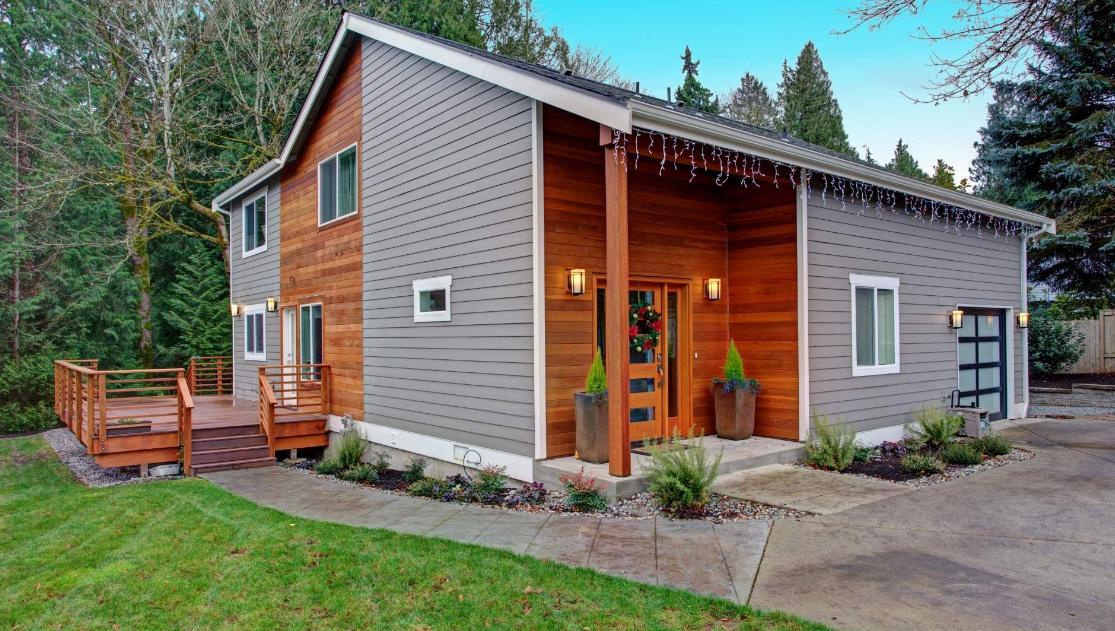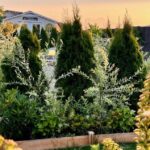When selecting for the exterior of your home, there’s just something about cedar siding that’s absolutely appealing. One of the reasons this is such an attractive option for both homeowners and builders alike is its beauty, strength, and sustainability. If you want to improve the look of your home, add to the at curb appeal or value, create a durable exterior that won’t ever cost a fortune to manage, then cedar siding is exactly what you’ve been looking for.
Thank you for reading this post, don't forget to subscribe!This article will explain all the advantages, types, installation, maintenance, and costs of cedar siding, so you can determine if it’s right for your home.
Cedar Siding 101: Advantages In fact the wood first gained popularity in North America because it was a popular choice for ship building.
What is Cedar Siding Made of? Cedar siding, as the name suggests, is created from cedar wood – a top-tier choice for residential exteriors, known for its classic, timeless appearance and adaptability. Recognized by its unique grain patterns and rich, warm color, cedar siding brings a natural warmth and timeless beauty to any home Style, from traditional to modern.
But looks aren’t the only thing that sells. With unique durability, insulation properties, and sustainability, it is practical option for throughout much of the country.
Why is Cedar Siding Popular?
Eco-Friendly Charm: Not many materials can match the natural beauty of wood, but cedar in particular has a wow factor.
Sustainability: Cedar is “green,” appealing to the homeowner who wants to be a friend of the environment.
Versatility: If you like Shake siding, but are looking for a more modern alternative, you can achieve that look with beveled horizontal boards instead cedar siding can fit your vision.
Now that you have a good idea about why people have been using cedar for so long, let’s see what different options there are.
Different Types of Cedar Siding: Style, Cuts, Grades
There are many design options available to match your style and your home’s architecture with cedar siding. Here’s a closer look at the styles, cuts and grades.
Common Styles
Bevel Siding (a.k.a. clapboard or lap siding): Known for its horizontal, overlapping..read more design, bevel siding is great for achieving a clean, classic look.
Shingles vs. Shakes: Shakes are more rugged looking; shingles are more uniform-looking and smooth. And both look stand out-nice in cottages or modern homes.
Board-and-Batten: Doors in this horizontal design are made up of large boards attached to shorter boards (battens) that run vertically and cover gaps between boards. It’s great for a country or rustic look.
Tongue-and-Groove and Channel Siding: Installed horizontally, vertically, or even diagonally for a smooth, contemporary feel.
Grades of Cedar Siding
Clear Grade: Knot-free, high-quality cedar siding has a smooth surface and is the best choice for a finished look.
Knotty Grade (or Rustic Grade) : Characterized by distinctive knotting that provides a more natural, rugged appeal.
The style and grade you select will establish the personality of your whole home’s exterior.
Advantages of Cedar Siding
Cedar siding is more than just aesthetically pleasing. Here’s why so many homeowners and builders can’t stop bragging about it.
Durability
Cedar does not need to be cut due to its high natural resistance to decay, moisture, and insect damage when properly maintained. Which is to say, it is built to last, even in harsh climates.
Aesthetic Appeal
Cedar’s natural and warm texured exterior is made of beautiful cedar with a texture that gives off the quality of wood and can be painted or stained a wide range of color options. Cedar weathers to a silvery-gray patina which enhances the beauty.
Eco-Friendliness
Environmentally minded individuals may prefer cedar as its biodegradable, renewable, and less processed than synthetic materials.
Insulation
Cedar insulation is fantastic for thermal and sound insulation while ensuring your home is quiet and energy efficient.

Cedar Siding Installation Guide Now you can.
Considering installing cedar siding on your own? Here are what you need to do to achieve professional finish.
Materials Needed
Cedar snap on siding of the desired cut and style
Nails or screws, rust-resistant, and if you are reusing the old nails and screws, make sure you remove them in such a way that they are not damaged.
- Waterproof house wrap
- Flashing and trim
- Saw and level
Step-by-Step Instructions
Prepare the Surface
Start from the outside of the house. Remove old siding and make sure the walls are clean, smooth, and dry. If your siding is old enough it probably lacks a weather-resistant barrier such as house wrap.
Install Flashing
Fit metal flashing between doors, windows and where siding and trim meet for extra insurance water can’t penetrate.
Begin Installing Boards
Working from the home’s foundation, use nails to secure the cedar boards, leaving an equal space between the boards. Keep them straight with a level.
Overlap and Secure
If you are using lapping boards (like bevel siding) you can provide a 1-inch overlap to get the best water protection.
Finish with Trim
Trim may be added for neatly finished edges.
More From FarhadMHey Karen, Appropriate placement and sealing are key for longevity, so if you’re iffy about DIY there’s always the option of hiring a pro.
How to Clean and Maintain Cedar Siding
In order to keep your cedar siding looking and working its best, you should do a little regular maintenance.
Cleaning
Once a year, scrub away dirt and grime with soapy water and a soft-bristle brush. Also steer clear of power washers, which can harm the wood.
Staining or Painting
Recoat with a stain or paint every 3-5 years to prevent weathering. \hypertarget{step_3}{step 3] Use breathable finishes that allow Wood to swell and shrink.
Protecting from Moisture
Inspect for cracks or rot once a year and fill any gaps. A: Water settling around the house is never a good idea, says Foundation Repair Pros, Houston.
Cost of Cedar Siding vs. Other Alternatives
How does cedar siding compare to other materials?
Material
- Average Cost per Sq. Ft.
- Key Benefits
- Cedar Siding
- $6 – $10
- Natural aesthetic, environment-friendly
Vinyl Siding
- $3 – $8
- Easy to take care of and cheaper on the cost side
Fiber Cement
- $5 – $10
- Durable, fire-resistant
Brick
- $9 – $15
- Excellent durable, great look
Though cedar siding is likely to be more expensive initially than vinyl or fiber cement, its beauty and eco credentials can easily make it worth it.
Common Problems and Solutions
As with any material used in building a house, cedar siding has its own ups and downs. Here’s how to solve them.
Problem: Fungal Growth
Solution: When it comes to a ventilated area and a regular schedule for cleaning and maintenance.
Problem: Warping or Cracking
Solution: Seal and stain regularly to avoid this. Also, check for improper instal lation resulting in uneven stress.
Problem: Pests
Solution: Install cedar treated with pest-repelling finishes, and avoid landscaping close to walls.
Cedar Siding Will Change The Look Of Your House
Whether you love its natural appearance, its longevity, its status as an environmentally-friendlier material or all of the above, cedar siding brings a lot to the table. When installed carefully and maintained well, it will add value and curb appeal to your home for years.
For a design that turns heads, mixing classic with modern incedar siding is a decision that’s going to age well.



